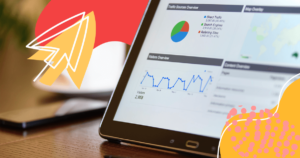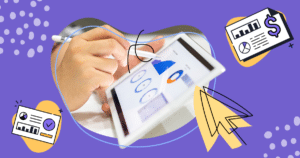Every day, billions of new articles, websites, and web pages are created to promote brands and increase sales across every industry around the world.
But not all content is created equally.
Some of them happen to have special words that draw customers toward the digital marketing channels of a company.
They are called “words that sell” and they can turn a bland headline that’s easily ignored into an attention-grabbing headline that customers click on.
These words aren’t the only thing that guarantees a sale, of course.
But when they are used in the right way, they can attract people interested in what you have to say.
So, which words are the best sales drivers, and how can you use them?
Below are 10 of the most effective words that sell and the specific ways that they can help you succeed:
- 1. Easy
- 2. You
- 3. Best
- 4. Why
- 5. Free
- 6. Now
- 7. Never
- 8. Beat
- 9. New
- 10. What
- Words That Sell Drive Your Audience To Perform An Action
Download this post by entering your email below
1. Easy
Few words draw readers in the way ‘easy’ does.
That’s because it covers so many bases. Anyone who’s looking for tips on writing blog posts is going to prefer “5 easy ways to write great blog posts” over that same headline without ‘easy’.
The word ‘easy’ is attractive to readers, as it ensures they will be able to use the tips in the article without needing to learn complicated strategies.
Similarly, using ‘easy’ to describe how simple it is to use a product makes that product more appealing to customers.
‘Easy’ suggests straightforward. It implies there aren’t any confusing steps involved and customers associate this with saving time and effort.
2. You
Consider the difference between “strengthening a brand” and “strengthening your brand”.
The first phrase is useful, but it’s not specific to you and can be easily overlooked.
Addressing the reader directly makes it difficult for them to scroll past the content. A connection is made when a reader feels the information is personalized.
So, ‘you’ is a powerful word that sells. It can take a generalized headline and instantly make it more relevant to readers.
The word ‘you’ can pull readers in and make them feel included and recognized individually.
In an online atmosphere where you’re up against your competitors, it’s essential to grab your customers’ attention.
And speaking directly to them is a sure-fire way to stand out.
3. Best
Describing anything as the ‘best’ of its kind instantly draws the eye.
Whether customers are going in with an optimistic attitude and trusting your product is the best or they’re skeptical and want to know why you’re the best, you’ve got their attention.
Much like with ‘easy’, when you label something as being the ‘best’, you’re making a promise.
You’re telling customers you’ve compared similar products. You’re letting them know that even when pitted against competitors, your product has proven to be superior.
Your brand is promising that your customers are getting the most value for their money, effort, and time.
For example, advertising your product as the best cloud management platform can drive sales.
Customers see the word ‘best’ and understand you’re aware of the existence and reach of competitors.
You’re the best option because your product performs better than your competition’s.
4. Why
If your headline includes the word ‘why’, you are signaling to customers that you’ve got evidence to prove your service is the one they want.
Using this type of question leads to concise and developed answers and explanations.
‘Why’ can also be used to introduce a new or soon-to-be-released service to your prospective clients.
For example, the headline “Why you need to know about anything as a service” tells readers that you know all about XaaS and can explain why it’s important for them to learn about it, too.
5. Free
There’s a lot of power in the word ‘free’.
Consumers don’t always want to spend money on products or services if it’s their first time using a brand.
Nobody likes spending too much money, especially not on something they’re trying for the first time.
The reason ‘free’ is a great word that sells is that it tells customers right away that they can use your product or service without a commitment.
Free trials or products are an investment in the belief that your brand is superior.
Consumers will be attracted to the notion that they can try it first, but they also like the freedom in making the choice.
If you’re sending out links as part of your SMS marketing plan, include the word ‘free’ wherever applicable.
Letting customers try your product from the comfort of their mobile device, for free, makes your product or service accessible and enticing.
6. Now
This word that sells has a psychological effect on potential clients.
By using ‘now’ in a title, you create a sense of urgency. And this has two positive effects:
- First, you’re encouraging prospective customers to make a decision (including making a purchase) quickly, which drives sales.
- Second, the word ‘now’ can give the idea of a limited-time offer. This doubles any urgency in the customer who won’t want to risk missing out on a great time-sensitive deal.
The word ‘now’ also suggests a certain business orientation to your potential customers.
It tells them you’re the sort of business that’s up-to-date on new issues and that you’re offering immediate solutions.
7. Never
Unlike the positive words we’ve covered so far, ‘never’ suggests there’s a risk involved or something readers must stay away from.
This can draw them in just as well as positive words can.
Enticing headlines using the word ‘never’ might be structured as “Never make these 8 common mistakes” or “3 types of blog content to repurpose into social media posts — and 3 you should never use”.
Both titles let readers know there are certain errors they must avoid. And they will click on your content in order to understand those mistakes.
8. Beat
Using ‘beat’ or defeat’ suggests your product or service makes something easier or solves a problem.
For example, a link titled “Beat writer’s block with these SEO services” tells readers your services are stronger than any blocks they might be facing.
It indicates the service can overcome what would otherwise be a difficult and frustrating situation.
Making your service sound strong is especially important when the challenge your service tackles is tricky to navigate.
In the above example, writer’s block can lead to stagnation and a lack of content creation.
This can be dangerous for any business, so your service is here to help beat that risk.
9. New
Anything ‘new’ is worth learning about because it’s something that didn’t exist before.
Any new closing techniques should give you an edge over your competition.
This makes ‘new’ an incredible word that sells — even for existing customers.
As long as you can keep offering them new products, services, and/or features, they will stay engaged.
Continuously bringing new content to the table also helps build brand loyalty in your customers.
They already know your existing products or services are excellent, so telling them you’ve got more things ready for them to enjoy will make them keen to try them out.
10. What
Starting a headline with ‘what’ can be a powerful way to make readers think about the subject of your article.
You can double the effect by combining it with other question words such as ‘why’ or ‘how’.
For example, consider the difference between “Learn about virtual private clouds” and “What’s a virtual private cloud and how can I use it?”.
The second headline asks a question, then a follow-up question. It most likely says exactly what your audience is thinking.
Once they’ve read your headline, they’ll start to ask themselves the same questions you’ve put into words.
As a result, they’ll be far more likely to follow your link and click on your article since they want to have the answer.
Words That Sell Drive Your Audience To Perform An Action
This is exactly what you want for your business.
In the right hands, the words gathered in this post can make your links irresistible to your prospective customers.
They can help you sell with words and drive sales without revamping your marketing strategy.
So, keep that in mind, apply the techniques and you will see your results changing quickly.
This post was written by Sam O’Brien, the Director of Digital and Growth for EMEA at RingCentral, a Global VoIP, video conferencing, and conference call provider.
Sam has a passion for innovation and loves exploring ways to collaborate more with dispersed teams. He has written for websites such as VWO and Shift4Shop. Here is his LinkedIn.









